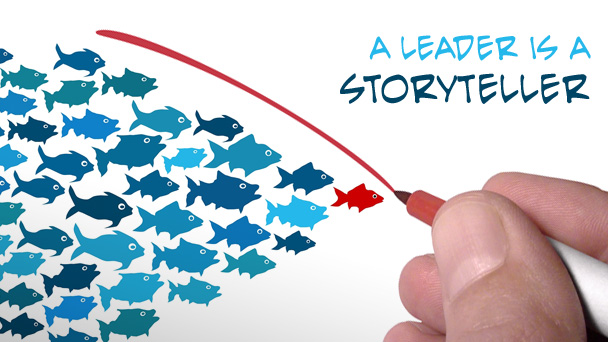Leaders as Storytellers: A Catalyst for Growth and Change
The success of our organization lies in changing the narrative of the thousands of lives we serve each year. For every individual whom we serve directly or indirectly through our influence, there is a story behind them—a story that changes as a result of the work we do. These stories are what inspire people to join our staff, become part of our family of brands, donate money, and to enter our programs seeking help.
The stories of those we serve are just part of the power of stories. Research proves that storytelling is also an essential skill for leaders to inspire and motivate. And, ultimately, they are a catalyst for growth and for success because, among other things, storytelling is a tool of persuasion—a key driver in a leader’s toolkit to win hearts and minds and to inspire action.
There are many ways to approach storytelling as a leader, but for me, the first and most important approach is to use storytelling as a means to show others who you are as a leader. Most often, this means telling the story of a time when we learned something—when we were vulnerable, perhaps believing we had the right answer and being humbled by an authentic truth that may have jolted our perceptions and inspired a new way of thinking. This type of story—told absolutely authentically and humbly—breeds trust. It helps those we lead identify with us and understand that as leaders we don’t have all the answers. The story scenario might unfold as, “I believed something, I made a mistake, I learned, and now I see things differently and what a difference it makes.”
Storytelling also motivates others to take action. Telling a specific story of something that has already happened and its success shows an audience what is possible. In my role as CEO of Fedcap, I have no shortage of true stories about how the work we do has impacted others. Telling my story of what it was like to work with someone and the rewards of witnessing their progress inspires others.
In every good story, something must happen and someone must change. Storytelling for its own sake is of course, entertaining. However, as a leader, the stories we tell must also be accompanied by some analysis of what happened and what its impact was as well as to reflect what changed as a result. If I tell a story about my own leadership, I must lay out the narrative and then reflect on how I changed. If I am telling a story about an individual we serve, then I must tell precisely what happened, what changed, and how that person is different as a result of the story. Stories can be not just about individuals, but also about the journey of a program or about an entire organization.
And not all stories are happy all of the time. Rarely do people ‘s lives stay on a single trajectory…they have ebbs and flows, it is what makes us human.
For us at Fedcap, all of our stories—the stories of those we serve, of our agency, of our growth and change over time and my own story as a leader—all follow a narrative that reflects the power of possible. People have entered our agency without hope and because of what happens between individuals, or a system that works, or an inspired story of someone else who has succeeded, things that seemed impossible morph into the possible. Stories are what touch us and inspire us and cause us to remember why we do the work we do. I am inspired daily by the stories I hear from staff and from those we serve about what can happen when we share our vulnerabilities, look to each other for support, and keep telling the stories of what is possible.
I am always eager to hear your stories. As always, feel free to share your thoughts.


